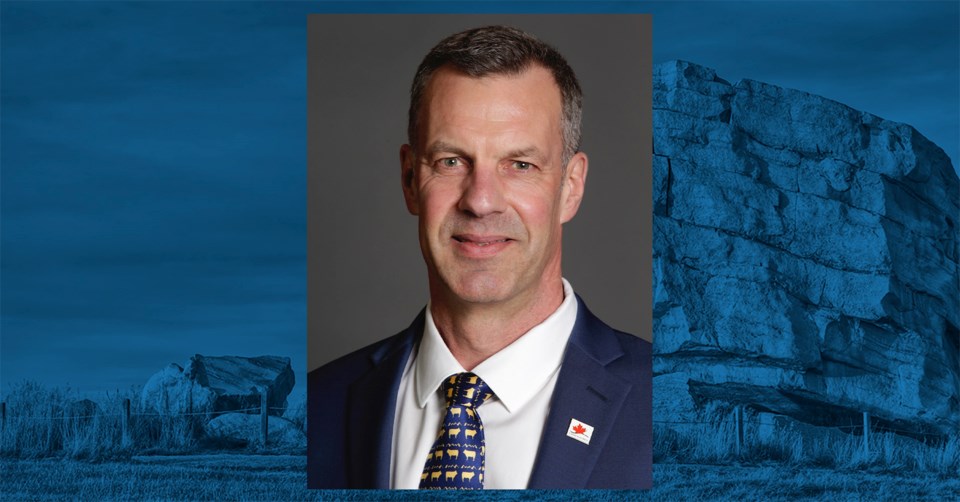There’s nothing like comfort food during a pandemic.
“Certainly, during a pandemic period people go to a comfort food – and beef is a comfort food,” said David Moss, general manager with the Canadian Cattlemen’s Association. “We feel good about the future.
“We look at what Canada is doing. The Canadian Round Table for Sustainable Beef – the first certified sustainable at retail product in the world is being developed right here in Canada. We are leading the world in a lot of these conversations.”
The Canadian Cattlemen’s Association represents approximately 55,000 beef producers across Canada. That would include ranchers and feedlots, but not the plants such as Cargill or the retailers.
Moss, who lives in Okotoks, grew up in the beef industry and has worked in the field for more than 30 years.
His family operated a feedlot in the Bassano area while he was growing up. As well he worked at Western Feedlots as general manager of cattle operations. He also worked with Livestock Identification Services.
As general manager with the national association, he’s seen the impact of the COVID-19 pandemic.
“The feedlot sector has definitely been hurting,” he said. “They were caught in that vortex of demand going through the roof because people were hoarding because they thought there were going to be food shortages – people were buying unprecedented amounts of beef products.
“But you also had the plants that had the outbreaks, so restocking the shelves was a real challenge. The feeders got caught in that – the inability to move the cattle to market.
“They took quite a hit.”
He said surprisingly, for the cattle coming off the ranch to the feedlot, the price remained strong.
“Because the feedlots have had such a tough time on profitability they usually dial that in for the next round of purchases,” Moss said. “But for whatever reason, they kept very aggressive on buying.”
He couldn’t predict whether feedlots will continue to pay that price.
“That’s the million-dollar question,” Moss said. “We are not sure what is driving it right now, but it seems to be holding steady.
“Also, a factor is grain prices are strong, as a result of a high demand around the world. The impact on that is a higher price for grain to feeder cattle, he said.
He said ranchers have had to think out of the box during COVID-19.
“If they have bull sales or heifer sales having people come on to their ranch has been tough,” Moss said. “They’ve gone to video sales or whatever they can do to mitigate the human interaction.”
He said getting cattle across the border was an issue the association dealt with early in the pandemic.
“We made sure we got the beef industry designated as an essential service,” Moss said. “That we were able to maintain border access, a flow of both cattle and people.
“But even then, you needed forms, documentation to prove that you’re an essential-service type worker.”
He said ranchers, feedlots and other operators also faced a shortage in temporary foreign workers to keep the respective operations running.
However, it hasn’t all been all doom and gloom for the industry – paramount has been the growth of public knowledge on the positive aspects of the beef industry.
“People are becoming much more aware of where the food is coming from,” Moss said. “Engaging with us in conversations about beef production. Some of the positive aspects of beef production on the environment, in terms of carbon sequestration, soil health, bio-diversity and all the positive things.
“We have had really good conversations with consumers that I don’t think we would have had without having the type of awakening of people in about their food.”
He said communication with ranchers and other associations was key early in the pandemic. Town hall Zoom meetings were held which were attended by approximately 1,000 participants. It also worked on getting disaster relief programs for those in the beef industry.
Key was maintaining the confidence of the people going into stores to buy the beef.
“We engaged deeply with consumers,” Moss said. “Try to assure them that the supply train was robust and was able to withstand some of the pressures that were put on it.
“They didn’t need to hoard food, the supply would be there for them.”
Moss said another positive aspect has been engagement with millennials and the younger generation.
“They really want to learn more and engage in the conversation,” Moss said. “We have created a whole new division at CCA to deal directly with those questions. We’ve had amazing success dealing with those questions.”
And there appears to be a generation ready to take over the industry at the grassroots level -- on the ranch.
“There is now. During the BSE days there was a lot of doom and gloom, but that generation has moved on,” Moss said. “But I think the things that are happening now are being seen more positively.
“The profitability has been fairly level at the cow-calf level. We are seeing more engagement.”
The CCA has a Young Leaders Program which has been used by approximately 200 students over the past decade.




